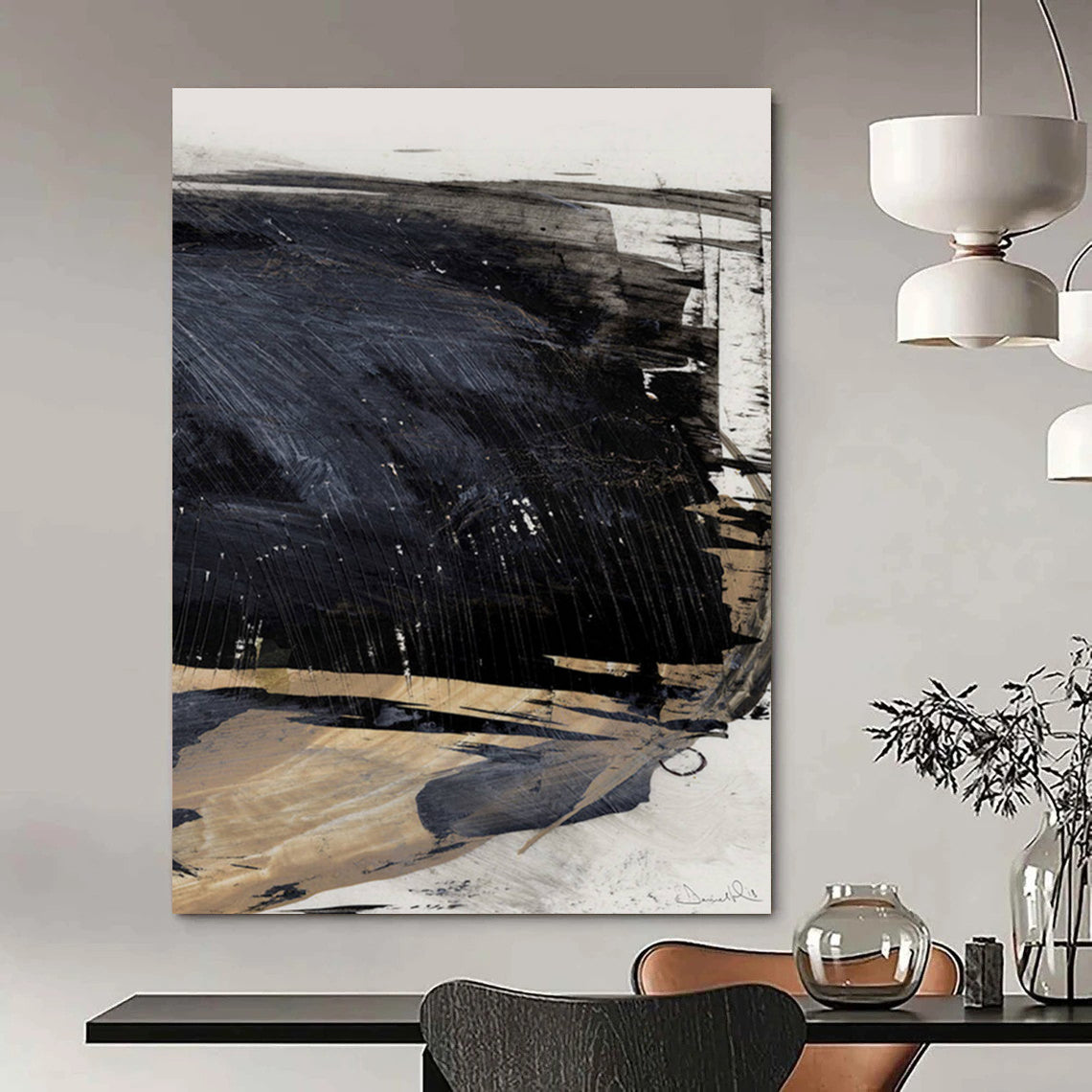Abstract art has become a powerful way to invigorate interiors, bringing depth, emotion, and dynamic visual interest to any environment. Choosing a Abstract Wall Art piece allows you to infuse your home or office with personality and creativity that transcends traditional representations. Unlike realistic art, abstract art uses shapes, colors, forms, and textures to evoke emotions and ideas, offering endless possibilities for interpretation and connection.
The Essence and Impact of Abstract Wall Art
Abstract art distills aesthetics to pure visual language—focusing on color contrasts, brushstrokes, and composition rather than depicting recognizable subjects. This flexibility makes it a striking focal point that helps shape the mood of a room. When integrated thoughtfully, abstract art can serve as a catalyst for creative expression while enhancing ambiance and elevating interior design.
The blog from Dyelot—Abstract Art Integration Interiors: A Guide to Creative and Mindful Design—describes how abstract art acts as a storytelling tool, inspiring emotional connection and creativity in any space. It highlights the artwork's ability to harmonize with diverse design styles, from minimalist to eclectic, and emphasizes the importance of considering scale, color, and lighting for maximum impact.

Celebrated Abstract Artists and Their Iconic Works
Several renowned artists have pioneered abstract art, creating masterpieces that continue to inspire:
-
Wassily Kandinsky, often credited as a founder of abstract art, emphasized the spiritual resonance of color and form. His vibrant compositions express rhythm and emotion beyond literal interpretation.
-
Piet Mondrian evolved abstract art into geometric purity with his grid-based compositions of primary colors, which have influenced modern design aesthetics.
-
Hilma af Klint broke ground with her mystical abstract paintings decades before the movement gained prominence, blending symbolism with vivid color.
-
Jackson Pollock’s drip paintings introduced dynamic movement and chaos, capturing raw emotion and energy on large canvases.
You can find insightful analyses of these artists and others on the blog The Journey of Modern Abstract Art in Interior Design. Their works illustrate how abstract art can transform blank walls into immersive experiences.
Why Abstract Wall Art is Perfect for Interior Spaces
Abstract art's remarkable versatility makes it suitable for a wide range of interior designs. According to AbstractWallArt.com.au’s article on abstract art for walls, the style is not constrained by explicit subject matter, which allows it to evoke moods and feelings through color, texture, and composition. This capacity to influence ambiance makes abstract pieces ideal for both residential and commercial atmospheres.
Furthermore, Harrietzzart’s blog on The Impact of Abstract Art for Interior Design Projects stresses how abstract paintings set the tone of a room, add unique personality, and stimulate engaging conversations among visitors. The fluid forms and bold colors complement furnishings and architectural features, enriching spatial dynamics without overwhelming.
Modern Trends and Tips for Displaying Abstract Wall Art
The design blog AbstractHouse.com shares that the latest trends highlight abstract pieces that can evoke energy or calm, depending on color selection and form. Abstract art’s adaptability in size and placement means it can serve as a dramatic focal point or a subtle complement.
For styling large abstract artworks in living rooms or offices, the guide at StartAtHomeDecor.com offers practical advice to balance scale with room proportions, harmonize colors, and incorporate lighting techniques to enhance presence.
Additionally, ThePicturalist.com highlights how mixing various abstract styles and textures can create a multi-layered interior narrative that reflects personal taste and artistic vision.
Bringing Abstract Wall Art Home: Commissioning and Care
Ordering a custom Abstract Wall Art piece allows for complete personalization—from selecting the size and medium to choosing a color palette and style that matches your vision. Collaborating with artists lets you engage with the creative process and ensures the final artwork resonates with your space.
Lighting and placement are crucial. Well-directed lighting can illuminate texture and depth, while thoughtful positioning defines focal points and flow. Negative space around an art piece gives it room to breathe and amplifies its impact.
For those interested in integrating abstract art thoughtfully, Dyelot’s comprehensive guide underscores considering emotional resonance, balance, and harmony within the interior design.
FAQ
How does abstract wall art influence the mood of a room?
Abstract art’s colors, shapes, and forms evoke emotions and energy, helping set a calming, invigorating, or contemplative ambiance based on the artwork’s character and placement.
Can abstract art fit any interior design style?
Yes. Its versatility allows it to complement minimalist, modern, eclectic, bohemian, and traditional interiors by adjusting scale, color, and form to suit the environment.
What should I consider when choosing abstract art for my home?
Consider the room’s size, existing color palette, lighting conditions, and the emotional atmosphere you want to create. Selecting pieces that resonate personally enhances connection and visual harmony.
Is it necessary to commission a custom piece?
Not necessarily, but custom art provides a unique opportunity to tailor the work to your specific aesthetic and spatial requirements, ensuring a perfect fit and personal expression.
Where can I find inspiration and reliable guidance on abstract wall art?
Blogs like Dyelot’s interior design guide, ThePicturalist, and We Art’s journey into abstract art offer expert tips, trends, and artist spotlights.
Elevate your interiors with a beautiful Abstract Wall Art piece that speaks your language of creativity, emotion, and style.

